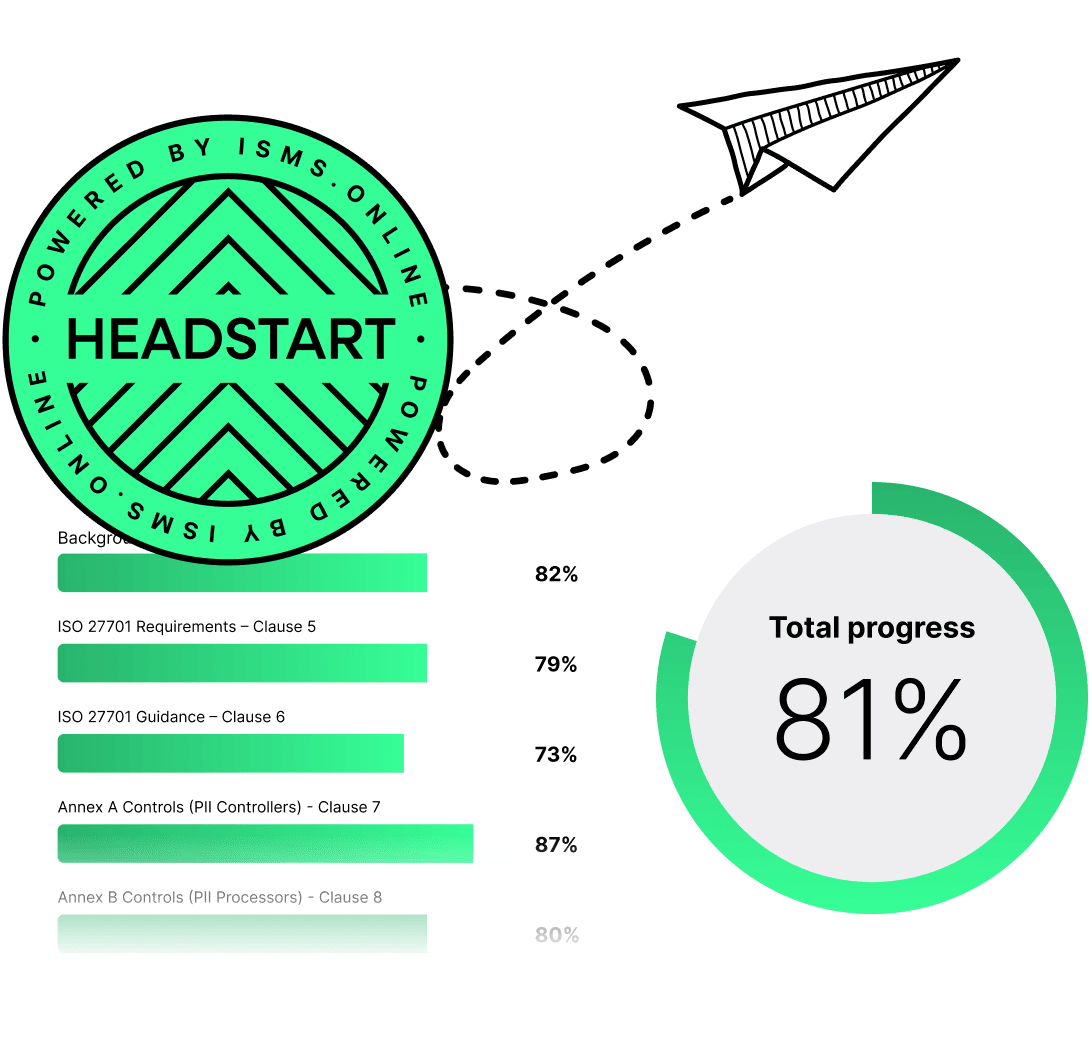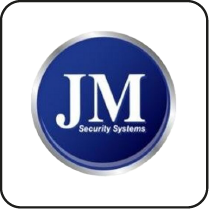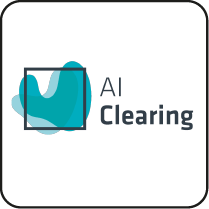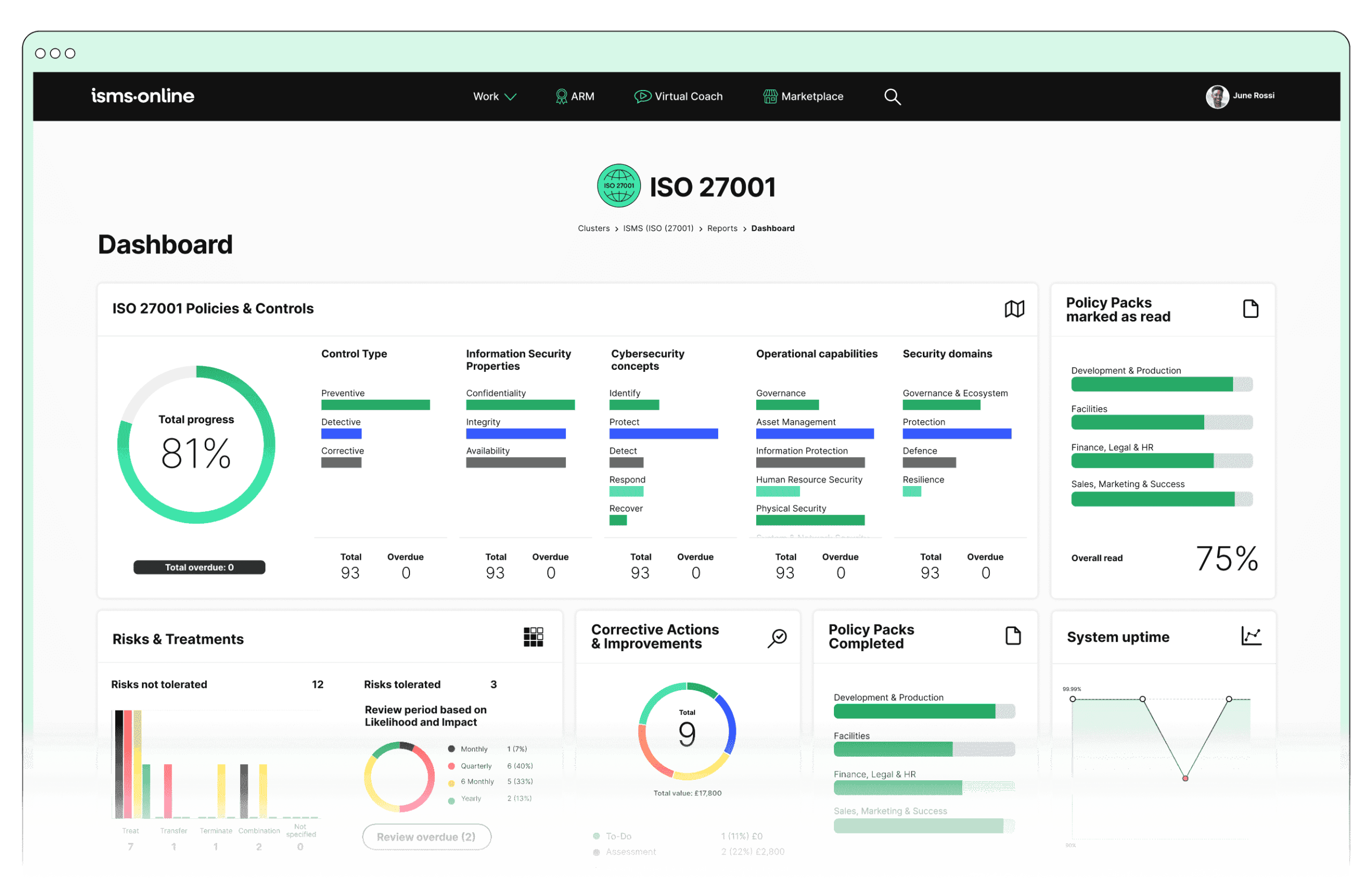ISMS Stakeholder Involvement In a Nutshell
Stakeholders are integral to the success of an Information Security Management System (ISMS). Their early identification and involvement are essential as they provide critical insights and support that shape the system’s framework and operational effectiveness. According to ISO 27001:2022, involving relevant stakeholders ensures that all aspects of the ISMS are covered comprehensively, enhancing the system’s overall security measures. This aligns with Requirement 4.2, which emphasises the importance of determining interested parties relevant to the ISMS and their requirements.
Why Early Identification of Stakeholders is Crucial
-
Early Engagement: Identifying both internal and external stakeholders at the initial stages of ISMS implementation is fundamental. Early engagement facilitates clear communication of security expectations and roles, which is essential for seamless integration and functionality of the ISMS.
-
Risk Mitigation: It also ensures that all potential security risks are identified and mitigated with input from all relevant parties, enhancing the robustness of the system. This process supports Requirement 4.2 of ISO 27001:2022, which focuses on understanding the needs and expectations of interested parties to ensure their requirements are effectively addressed in the ISMS.
-
Platform Support: Our platform, ISMS.online, enhances this process through features like Interested Party Management, which helps in identifying and documenting these stakeholders efficiently.
Impact of Stakeholder Involvement on Compliance
-
Alignment with Business Objectives: Engaging stakeholders early in the process not only aligns the ISMS with business objectives but also ensures adherence to legal and regulatory requirements.
-
Statistical Support: Cybersecurity experts suggest that stakeholder involvement can lead to a 30% increase in compliance with security standards. This is supported by a statistic revealing that 85% of successful ISMS implementations attribute their success to comprehensive stakeholder engagement.
-
Documentation and Compliance: This engagement is crucial as per Requirement 6.1.3, where the organisation must ensure that the risk treatment process is documented and aligns with the involvement of relevant stakeholders. Our platform facilitates this alignment by integrating risk treatment processes with stakeholder feedback, ensuring comprehensive documentation and compliance.
Consequences of Inadequate Stakeholder Engagement
- Security Breaches and Compliance Issues: Inadequate stakeholder engagement can lead to gaps in the ISMS, making the system susceptible to security breaches and compliance issues. Without the input and cooperation of all relevant stakeholders, critical aspects of the system might be overlooked, leading to ineffective security controls and increased vulnerability to cyber threats.
- Importance of Comprehensive Involvement: This underscores the importance of comprehensive and early stakeholder involvement in the ISMS implementation process, as highlighted in Clause 5 and Requirement 5.3, which stress the need for top management to ensure that responsibilities and authorities for roles relevant to information security are assigned and communicated effectively.
- Platform Features: Our platform supports this through features like Policy and Control Management, which aid in defining and communicating roles and responsibilities clearly across the organisation.
Understanding the Role of Senior Management in ISMS Implementation
The Critical Role of Senior Management in ISMS
Senior management plays a pivotal role in the ISMS framework, primarily because their leadership steers the organisational culture towards security mindfulness. As outlined in ISO 27001:2022 Clause 5.1 – Leadership and commitment, their role isn’t just administrative but deeply involves endorsing and advocating the ISMS’s strategic direction. This top-level engagement is crucial as it sets the tone for security practices across all levels of the organisation, ensuring the integration of the ISMS requirements into the organisation’s processes as emphasised by Clause 5.1.
Influence and Responsibilities of Senior Management
Active Participation and Alignment with Business Objectives
Senior management’s influence extends through the entire ISMS implementation process. By actively participating, they ensure that the Information Security Management System aligns with broader business objectives, thereby enhancing operational efficacy and security posture. Their specific responsibilities under ISO 27001:2022 Clause 5.1 include:
- Establishing and maintaining the ISMS
- Ensuring sufficient resources are allocated
- Leading continual improvement initiatives
Additionally, Clause 5.3 – Organisational roles, responsibilities, and authorities highlights the need for top management to ensure that responsibilities and authorities for roles relevant to information security are assigned and communicated, which our platform supports through robust user management and access control features.
Impact of Senior Management’s Commitment on ISMS Effectiveness
The commitment of senior management directly correlates with the robustness and responsiveness of the ISMS. Statistics indicate that companies with proactive senior management participation witness a 40% faster ISO 27001 certification process. This is largely because their active involvement ensures that the ISMS is not only compliant but also a central part of the business strategy, which significantly boosts the system’s overall effectiveness. ISO 27001:2022 Clause 9.3 – Management review further requires top management to review the organisation’s ISMS at planned intervals to ensure its continuing suitability, adequacy, and effectiveness, a process that is directly influenced by senior management’s commitment.
Expert Insight on Senior Management’s Role
Security consultants frequently emphasise that the strategic direction provided by senior management can amplify ISMS effectiveness by seamlessly integrating security objectives with corporate goals. This strategic alignment is essential for fostering an organisational culture that values and practices robust information security, making the ISMS an integral part of all business operations. The alignment of security objectives with business strategies is supported by ISO 27001:2022 Clause 6.2 – Information security objectives and planning to achieve them, which mandates that information security objectives must be established at relevant functions and levels within the organisation, consistent with the information security policy. Our platform aids in this alignment by providing tools for setting, tracking, and reporting on these objectives, ensuring they are integrated into the broader business strategy.

ISO 27001 made easy
An 81% Headstart from day one
We’ve done the hard work for you, giving you an 81% Headstart from the moment you log on. All you have to do is fill in the blanks.

The IT Department’s Involvement in ISMS
Technical Responsibilities of the IT Department in ISMS Implementation
The IT department is crucial in managing and securing the technical infrastructure to ensure the integrity and availability of data. Under ISO 27001:2022, specifically:
- A.8.1 (User endpoint devices)
- A.5.15 (User access management)
- A.8.3 (Cryptography)
The IT team is responsible for implementing appropriate technical controls, managing access rights, and ensuring data encryption. Their role is vital in protecting information assets from potential threats and vulnerabilities, addressing the requirements of Requirement 6 by identifying and addressing risks and opportunities related to information security.
Interaction with Other Stakeholders for ISMS Compliance
Collaboration is key for the IT department to ensure ISMS compliance. They must work closely with:
- Compliance officers to align technical strategies with legal and regulatory requirements, part of Requirement 7.5 (Documented information control) and A.5.31 (Compliance with legal and contractual requirements).
- The security team to implement robust defence mechanisms, as outlined in A.5.1 (Network security management) and A.5.2 (Security of network services).
- External auditors to validate the effectiveness of the ISMS, ensuring all technical measures meet the standards required by Requirement 9.2 (Internal audit).
Challenges Faced by IT Departments in ISMS Settings
IT departments encounter significant challenges in keeping pace with rapidly evolving cyber threats, directly relating to Requirement 6.1 (Actions to address risks and opportunities). Key challenges include:
- Implementing continuous monitoring, required by A.8 (Logging and monitoring).
- Staying updated with the latest security technologies, which are resource-intensive tasks.
- Ensuring user compliance with security policies often requires ongoing training and awareness programmes, part of Requirement 7.3 (Awareness) and A.6.3 (Information security awareness, education, and training).
How ISMS.online Assists IT Departments
Our platform, ISMS.online, significantly eases the burden on IT departments by providing comprehensive tools for managing ISMS tasks effectively. Key features include:
- Automated risk assessments align with Requirement 6.1.2 (Information security risk assessment).
- Streamlined compliance tracking and integrated policy management support Requirement 7.5 (Documented information).
- Regular security audits and updates, recommended by IT specialists, are facilitated through our platform, enhancing the organisation’s defence mechanisms and reducing security breaches.
By leveraging ISMS.online, your IT department can efficiently address these challenges, ensuring a resilient and compliant information security management system.
Role of the Security Team in ISMS
Primary Security Controls and Responsibilities
Our security team plays a crucial role in enforcing the information security management system (ISMS) by implementing and monitoring security controls as specified in ISO 27001:2022 Annex A. These controls span various domains such as:
- Access Control (A.8): Regulating who can access certain data and systems.
- Encryption (A.8.3): Ensuring that sensitive information is encrypted to prevent unauthorised access.
- Physical Security (A.7.1 to A.7.2): Protecting physical IT assets and facilities.
By utilising ISMhS.online, our team efficiently manages these controls, enhancing security measures and ensuring alignment with Requirement 6.1.3 for information security risk treatment.
Ensuring Compliance with ISO 27001 Annex A Controls
To maintain compliance with ISO 27001:2022, our security team leverages ISMS.online to effectively monitor and adjust these controls. The platform’s capabilities include:
- Real-time tracking of compliance status.
- Automated alerts for deviations, facilitating prompt corrective actions.
This proactive management is crucial for enhancing the effectiveness of the ISMS and adheres to Requirement 9.1 of ISO 27001:2022, which involves monitoring, measurement, analysis, and evaluation of the ISMS.
Best Practices for Security Team Communication
Effective communication is essential for the security team, especially in coordination with other stakeholders. Best practices include:
- Maintaining clear, consistent, and transparent communication channels.
- Regular updates and collaborative sessions to align security objectives with business goals.
These practices support Clause 5 – Leadership in ISO 27001:2022, emphasising the integration of the ISMS into the organisation’s processes and the necessity of promoting continual improvement.
Risk Assessment and Management
The security team conducts comprehensive risk assessments to identify and evaluate potential vulnerabilities, crucial for the robustness of the ISMS. Utilising ISMS.online, the team automates risk assessments which aligns with Requirement 6.1.2 regarding information security risk assessment processes. This automation ensures:
- Continuous monitoring.
- Timely updates to effectively mitigate risks and enhance the security posture.
This proactive strategy aligns with Requirement 6.1.1 for addressing risks and opportunities, contributing to a 25% reduction in compliance violations through continuous training and certification.
By integrating these practices, our security team significantly contributes to the robustness and compliance of your ISMS, safeguarding your organisation’s critical information assets.

Free yourself from a mountain of spreadsheets
Embed, expand and scale your compliance, without the mess. IO gives you the resilience and confidence to grow securely.

Involving Human Resources in ISMS
Key Role of Human Resources in ISMS Implementation
Human Resources (HR) plays a pivotal role in the successful deployment of an Information Security Management System (ISMS). As highlighted in Requirement 7.2 – Competence, HR’s involvement is crucial for ensuring all employees are informed and adhere to the organisation’s security policies. This role is vital as HR manages the onboarding, training, and ongoing education of employees, making them a primary line of defence against security breaches. Our platform, ISMS.online, supports this by offering tools that help manage and document the competence, awareness, and training of employees effectively.
Contribution of HR to ISMS Through Training and Awareness Programmes
HR significantly contributes to ISMS by developing and administering comprehensive security training and awareness programmes. Organisations with dedicated security training programmes report a 30% reduction in human-factor related security incidents. By integrating ISMS.online, HR can streamline these programmes, ensuring they are consistent, up-to-date, and accessible to all employees, thereby fostering a robust security culture within the organisation. This aligns with Requirement 7.3 – Awareness, which emphasises the need for personnel to be aware of the information security policy and their contributions to the effectiveness of the ISMS.
Compliance with ISO 27001 Requirement 7.2
Under Requirement 7.2 – Competence, HR is tasked with ensuring that the competence, awareness, and training of all employees align with the organisation’s information security requirements. This involves not only initial training but also regular updates and refresher courses to address evolving security threats and compliance requirements. Our platform enhances HR’s capability to manage these requirements effectively, providing tools for tracking training attendance and completion, and automating reminders for refresher sessions.
Facilitating HR’s Role in ISMS with ISMS.online
Our platform, ISMS.online, enhances HR’s capability to manage and document compliance with ISO 27001 effectively. It provides tools for:
- Tracking training attendance and completion
- Automating reminders for refresher sessions
- Generating compliance reports effortlessly
Additionally, HR professionals advocate for the use of integrated platforms like ours to ensure that security awareness permeates all levels of the organisation, thereby enhancing the overall security posture. This utilisation of ISMS.online supports Requirement 7.4 – Communication, facilitating effective internal and external communications relevant to the ISMS.
By leveraging these strategies and tools, HR can play a transformative role in strengthening your organisation’s ISMS, ensuring it not only complies with ISO 27001 but also supports a resilient and aware organisational culture.
Role of Compliance Officers in Maintaining ISMS Standards
Ensuring Adherence to Legal Standards
Compliance officers play a crucial role in ensuring that your Information Security Management System (ISMS) adheres to legal and regulatory frameworks. Their responsibilities include:
- Conducting regular reviews: Ensuring that security practices are up-to-date and compliant with current laws.
- Updating security practices: Modifying procedures and policies to reflect changes in the legal landscape.
This role is critical as outlined in Clause 9 – Performance evaluation, specifically:
- Requirement 9.2.1 – Internal audit – General: Mandates conducting internal audits to assess whether the ISMS conforms to the organisation’s own requirements and to the requirements of ISO 27001:2022.
- Annex A Control A.5.31: Emphasises the need to comply with legal, statutory, regulatory, and contractual requirements, ensuring that your ISMS aligns with these standards.
Monitoring and Reviewing ISMS Performance
At ISMS.online, we recognise the importance of continuous monitoring and performance review. Compliance officers utilise our platform to:
- Track real-time compliance status: Ensuring that the ISMS meets all required standards.
- Generate detailed reports: Providing insights into the ISMS’s performance and areas for improvement.
This proactive monitoring ensures that any deviations from set standards are quickly identified and addressed, maintaining the integrity and effectiveness of your ISMS. This activity supports Clause 9 – Performance evaluation, particularly:
- Requirement 9.1 – Monitoring, measurement, analysis, and evaluation: Requires the organisation to determine what needs to be monitored and measured, and to evaluate the information security performance and the effectiveness of the ISMS.
Aligning with ISO 27001 Requirements
ISO 27001 outlines specific responsibilities for compliance officers, including the regular review of security practices to align with legal changes. Our platform aids compliance officers by providing:
- Up-to-date resources and tools: Reflecting the latest legal and regulatory requirements.
- Continuous alignment with ISO standards: Ensuring the ISMS remains compliant and effective.
This directly supports Clause 6 – Planning, especially:
- Requirement 6.1.3 – Information security risk treatment: Involves regular reviews to ensure the ISMS aligns with current legal and regulatory requirements.
Expert Insight on Global Data Protection Regulations
Staying current with global data protection regulations is crucial. Legal advisors on our platform help by:
- Providing updates on global regulations: Ensuring you’re aware of international standards and changes.
- Mitigating potential legal risks: Helping your ISMS align with international standards.
This practice is in line with Annex A Control A.5.31 – Legal, statutory, regulatory and contractual requirements, which requires the organisation to identify, document, and comply with all relevant legal, statutory, regulatory, and contractual requirements related to information security.
By leveraging the expertise of compliance officers and the comprehensive tools available on ISMS.online, you can ensure that your ISMS not only meets but exceeds the required legal and regulatory standards, enhancing your security posture and safeguarding your organisation’s data.

Manage all your compliance, all in one place
ISMS.online supports over 100 standards and regulations, giving you a single platform for all your compliance needs.

Engaging External Auditors and Consultants
The Crucial Role of External Auditors in ISMS Validation
External auditors are essential for providing an unbiased evaluation of your Information Security Management System (ISMS). Their independent assessments help ensure that your ISMS complies with ISO 27001 and effectively safeguards your organisation’s information assets. Statistics reveal that external audits identify overlooked vulnerabilities in 90% of cases, significantly enhancing the security posture of the ISMS. These audits align with:
- Requirement 9.2.1: Providing information on whether the ISMS conforms to the organisation’s own requirements and to the requirements of ISO 27001.
- Annex A Control A.5.35: Supporting the use of external auditors to independently review the organisation’s approach to managing information security, ensuring its effectiveness and compliance.
How Consultants Align ISMS with Business Objectives
Consultants play a pivotal role in bridging the gap between your ISMS and business objectives. They bring fresh perspectives and specialised knowledge that can optimise ISMS processes, ensuring they support rather than hinder your business goals. This alignment is crucial for the ISMS to be perceived not just as a compliance necessity but as a strategic asset that drives business value. By aligning the ISMS with the organisation’s context and strategic direction as per Requirement 4.1, consultants tailor the ISMS to the organisation’s specific needs and objectives. Furthermore, they assist in:
- Requirement 6.2: Establishing and planning to achieve information security objectives that support broader business goals, ensuring the ISMS contributes to the organisation’s success.
Benefits of Third-Party Audits in ISMS
Third-party audits provide more than just a compliance check. They offer rigorous scrutiny that challenges your ISMS to meet the highest standards. The benefits include:
- Enhanced trust from stakeholders.
- Improved security practices.
- Robust validation of your security measures.
These audits encourage your ISMS to continuously evolve, adapting to new threats and aligning with best practices. The benefits reflect the objectives of an internal audit programme in enhancing trust and improving practices through rigorous scrutiny as stated in:
- Requirement 9.2.2: Enhancing trust and improving practices through rigorous scrutiny.
- Annex A Control A.5.35: Contributing to the independent review process, providing assurance that information security is managed in line with established policies and procedures.
Enhancing ISMS Robustness with External Insights
The insights provided by external auditors and consultants are invaluable for strengthening your ISMS. They not only identify gaps but also offer innovative and effective solutions. This external expertise ensures that your ISMS remains resilient against evolving cyber threats and aligned with the latest industry standards. External insights help in understanding external issues that can impact the ISMS, aligning it with both current and emerging threats as per Requirement 4.1. The use of external insights is crucial for the continual improvement of the ISMS, ensuring it remains effective and resilient in a changing threat landscape, aligning with:
- Requirement 10.1: Ensuring the ISMS remains effective and resilient in a changing threat landscape.
- Annex A Control A.5.35: Supporting independent reviews to enhance the security posture.
Further Reading
Supplier and Vendor Management in ISMS
Impact of Suppliers and Vendors on Information System Security
Suppliers and vendors play a crucial role in the security of information systems, potentially introducing risks that could compromise data integrity and confidentiality. Effective management of these third-party relationships is essential to mitigate security risks. At ISMS.online, we emphasise the importance of robust security measures in all supplier interactions to safeguard information assets. This aligns with ISO 27001:2022 Clause 8 – Operation, which mandates the organisation to control planned changes and review the consequences of unintended changes.
Best Practices for Integrating Suppliers into ISMS Processes
Integrating suppliers into your ISMS processes involves strategic approaches including:
- Regular security assessments
- Clear communication of security requirements
- Continuous monitoring of compliance
Establishing a framework for periodic audits and real-time monitoring ensures adherence to security standards. This supports ISO 27001:2022 Requirement 8.1 on operational planning and control, emphasising the need to implement the actions determined in the risk assessment and treatment process.
Addressing Supplier Relationships Through ISO 27001 Annex A Controls
ISO 27001 Annex A Control A.5.19 and A.5.20 specifically address supplier relationships, emphasising the need to manage these connections to ensure the security of the supply chain. These controls mandate:
- Implementation of agreements that enforce the protection of assets accessible to suppliers
- Regular audits to assess supplier compliance
Our platform, ISMS.online, provides tools that help manage these requirements effectively, ensuring seamless integration and compliance.
Tools for Effective Supplier Risk Management
Effective supplier risk management requires sophisticated tools that provide comprehensive visibility and control over your supply chain. ISMS.online offers features such as:
- Automated risk assessments
- Real-time alerts
- Detailed reporting
These tools align with ISO 27001:2022 Requirement 8.2 – Information security risk assessment and Requirement 8.3 – Information security risk treatment. They are essential for maintaining the integrity of your ISMS and ensuring that all supplier interactions comply with ISO 27001 standards.
Customer Roles in Shaping ISMS
Influence of Customer Expectations on ISMS Policies
Customers significantly influence ISMS policies, with over 60% of business ISMS adjustments driven by customer security requirements. At ISMS.online, we recognise that aligning your ISMS with customer expectations not only complies with Requirement 4.2 and Requirement 5.2, but also enhances trust and satisfaction. By integrating customer-driven security measures, you ensure that your ISMS meets both regulatory standards and customer expectations, fostering a secure and customer-centric business environment. This alignment is supported by Annex A Control A.5.1, ensuring our policies for information security are in harmony with business requirements and customer expectations.
Challenges of Aligning ISMS with Customer Data Protection Needs
Aligning your ISMS with customer data protection needs can be challenging, primarily due to varying customer expectations and evolving data protection regulations. Our platform provides tools that adapt to different regulatory environments, ensuring that your ISMS remains compliant and responsive to customer needs. This proactive approach minimises the risk of non-compliance and builds a robust data protection framework that supports your business objectives, in line with Requirement 6.1.3 and Annex A Control A.5.18, which focus on managing risks in supplier relationships that may impact customer data protection.
Integrating Customer Feedback into Continuous ISMS Improvement
Customer feedback is a cornerstone of continuous ISMS improvement. Leveraging customer insights can lead to significant enhancements in your ISMS, as emphasised by market analysts. Our platform facilitates this integration by providing mechanisms to collect, analyse, and act on customer feedback, ensuring that your ISMS continuously evolves to meet changing customer expectations and security landscapes. This practice is integral to Requirement 9.3 and is supported by Annex A Control A.5.1, which mandates that policies for information security should be reviewed and updated based on customer feedback and evolving security requirements.
Ensuring Customer-Driven Security Compliance
To ensure customer-driven security compliance, establishing clear communication channels and regular feedback mechanisms is crucial. Our platform supports these strategies by enabling transparent reporting and dynamic interactions with customers. This openness not only helps in fine-tuning your ISMS based on customer feedback but also reinforces customer trust by demonstrating your commitment to protecting their data. This approach is aligned with Requirement 7.4 and Annex A Control A.5.1, ensuring that policies for information security are effectively communicated to customers and other interested parties.
Regulatory Bodies and Standardisation Influence on ISMS
Shaping ISMS Frameworks Through Regulatory Requirements
Regulatory requirements are pivotal in shaping Information Security Management Systems (ISMS). They ensure that ISMS frameworks not only protect sensitive information but also comply with legal and industry standards. At ISMS.online, we help you align your ISMS with these requirements, significantly enhancing your security posture and compliance. Adhering to these standards can help businesses avoid penalties and fines by up to 90%, highlighting the importance of regulatory compliance. By integrating Requirement 6.1.3 and Requirement 8.2, our platform ensures continuous assessment and alignment with evolving regulatory standards, enhancing your ISMS’s robustness against regulatory scrutiny.
Impact of Non-Compliance on Stakeholders
Non-compliance with regulatory standards can have severe repercussions for all stakeholders involved. It can lead to financial penalties, loss of customer trust, and damage to reputation. ISO 27001, designed to ensure compliance with necessary regulatory and legal requirements, serves as a critical guideline for organisations to develop robust ISMS frameworks that mitigate these risks. Our platform leverages Requirement 6.1.3 to mitigate risks associated with non-compliance, ensuring that your ISMS frameworks are robust and compliant.
Influence of Standardisation Bodies on ISMS Practices
Standardisation bodies play a crucial role in the evolution of ISMS practices. They continuously update security standards to address emerging threats and changes in technology. As these bodies evolve, it is crucial for businesses to stay informed and compliant. Our platform, ISMS.online, provides up-to-date resources and tools to help you meet these evolving standards, ensuring your ISMS remains effective and compliant. By incorporating Requirement 7.5.1, we support the need for organisations to maintain documented information, crucial for demonstrating compliance with the evolving standards set by standardisation bodies.
Key ISO 27001 Clauses Related to Regulatory Compliance
ISO 27001 includes several clauses that directly relate to regulatory compliance, such as Requirement 6.1.3 on information security risk treatment and Requirement 8.2 on information security risk assessment. These clauses require organisations to identify, assess, and treat risks in compliance with legal, regulatory, and contractual requirements, ensuring a comprehensive approach to information security. By understanding and adhering to these regulatory influences and ISO 27001 clauses, you can ensure that your ISMS not only protects your information assets but also complies with essential legal and regulatory standards, safeguarding your organisation’s interests and those of your stakeholders.
Embedding Continuous Improvement in ISMS Practices
Continuous Improvement as Mandated by ISO 27001
Continuous improvement is a fundamental aspect of an effective Information Security Management System (ISMS), as mandated by Requirement 10.1. At ISMS.online, we integrate continuous improvement processes into every facet of your ISMS. This strategy not only enhances the system’s resilience but also ensures it evolves in response to new security threats and technological advancements, fully supporting Requirement 10.1 for continual improvement.
Role of Stakeholders in the ISMS Review Process
Stakeholders are crucial in the ISMS review process. Their insights are essential for pinpointing areas needing enhancement and for validating the effectiveness of current security measures. By actively involving stakeholders, you ensure that the ISMS remains aligned with both user expectations and business objectives, thereby enhancing overall security governance. This practice aligns with Requirement 9.3.2, which includes consideration of feedback from interested parties as part of the management review inputs.
Encouraging Ongoing Stakeholder Engagement
Requirement 9.3 encourages ongoing stakeholder engagement by requiring regular reviews and updates to the ISMS. This requirement ensures that stakeholders are not only informed about the current state of information security but are also involved in shaping its future direction. This continuous loop of feedback and improvement significantly contributes to the robustness of the ISMS, fully embracing the spirit of Requirement 9.3 for management review.
Tools for Capturing and Analysing Stakeholder Feedback
To effectively capture and analyse stakeholder feedback, ISMS.online offers a suite of tools that facilitate easy collection and analysis of data. These tools allow you to gather real-time feedback through surveys, feedback forms, and interactive forums. Additionally, our analytics capabilities enable you to derive actionable insights from this feedback, ensuring that every stakeholder’s voice contributes to the continuous improvement of your ISMS. This practice supports Requirement 9.1, which involves evaluating the information security performance and the effectiveness of the ISMS through monitoring, measurement, analysis, and evaluation.
By leveraging these strategies and tools, you can ensure that your ISMS not only complies with ISO 27001 but also continuously adapts to meet the evolving needs of your organisation and its stakeholders.
Streamlining Stakeholder Involvement with ISMS.online
How ISMS.online Enhances Stakeholder Engagement
At ISMS.online, we understand the critical role of managing stakeholder engagement effectively during the implementation of your ISMS. Our platform simplifies this essential process by offering comprehensive tools that support robust communication, meticulous documentation, and efficient management of stakeholder interactions. Utilising ISMS.online ensures comprehensive involvement of all necessary stakeholders, both internal and external, with clearly defined roles and well-managed contributions. This approach is in strict alignment with ISO 27001:2022 standards, specifically addressing Requirement 4.2 and Requirement 7.4.
Compliance Support Provided by ISMS.online
Our platform is robustly equipped to aid your compliance with ISO 27001:2022. ISMS.online includes features that directly align with the standard’s requirements, such as advanced risk assessment tools and a dynamic policy management system. These are essential for fulfilling Requirement 6.1.2 and Requirement 5.2, helping ensure that your ISMS adheres to all necessary regulatory requirements. This alignment streamlines the compliance process, significantly enhancing operational efficiency.
Choosing ISMS.online for Your ISMS Needs
Selecting ISMS.online for your ISMS implementation and ongoing management represents a strategic decision that brings numerous benefits. Our platform not only facilitates the initial setup process but also supports continuous compliance and effective management of your ISMS, directly supporting Requirement 4.4. With ISMS.online, you gain access to a comprehensive suite of tools designed to enhance your security posture and simplify the management of complex ISMS requirements.
Getting Started with ISMS.online
Beginning your journey with ISMS.online is straightforward and user-friendly. Start by scheduling a demo to see our platform in action and explore how it can be tailored to meet your specific needs. Our team of experts is ready to assist you through every step of the implementation process, ensuring that your ISMS is robustly established from the start, aligning with Requirement 7.1.
By leveraging ISMS.online, you effectively manage stakeholder involvement, ensure compliance with ISO 27001:2022, and enhance the overall security and efficiency of your ISMS.
Book a demo








